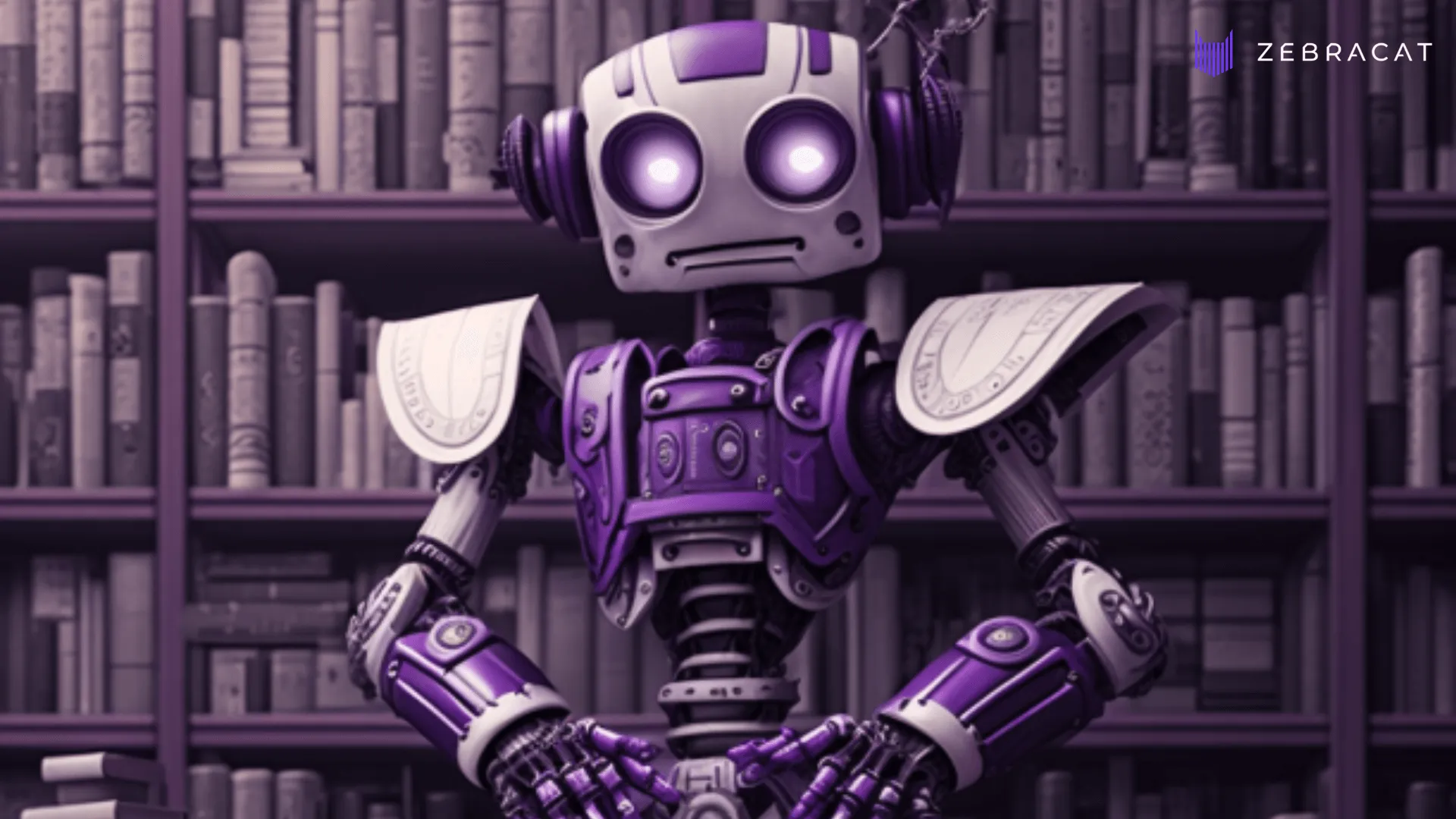Table Of Content
Introduction
Large language models (LLMs) have been in the news cycle recently and they are at the forefront of the AI revolution. So, in this blog post, we will cover what a LLM is, how it works, what top large language models are, how we can use them in marketing, what we should consider when analyzing the strength and weakness of a LLM, and how much more intelligent these fascinating models can become. Lastly, we list a few reasons why LLMs won’t replace marketers.
What is a LLM?
It is an AI system that uses advanced algorithms and neural networks to learn patterns and relationships in large amounts of text data, allowing it to generate coherent and meaningful language (Sentences, phrases, words, etc.).
How does a Large Language Model (LLM) work?
A large language model is trained on a massive amount of text data from a wide range of sources such as books, articles, and websites. This process allows it to learn the subtleties of language including grammar, syntax, and context. Essentially, it uses complex algorithms to analyze and interpret the patterns and relationships between words, phrases, and sentences to generate human-like responses to various inputs.
When given an input, the model uses its knowledge of language to generate a response that is tailored to the specific query or task at hand. This response can be anything from a simple answer to a complex analysis of a topic.
Top large language models
Here are two of the biggest LLMs:
1. ChatGPT
A software developed by OpenAI which is backed by many great investors such as Microsoft. ChatGPT is deemed as the biggest and most popular large language model. This software has two LLMs embedded inside: GPT-3 and GPT-4.
2. Bard
Developed by Google’s infamous Brain team, Bard is supposed to be a ChatGPT rival and it is similar in functionality to ChatGPT. But, it is finding its niche in coding by supporting over 20 programming languages such as Python and Javascript!
Large language model applications in marketing
Large language models (LLMs) have a wide range of applications in marketing. Here are some of the top applications:
1. Content generation
LLMs can be used to generate high-quality content, such as blog posts, social media posts, and product descriptions, saving time and effort for marketers. ChatGPT is a great model for this. With the right prompts, you can make decent drafts!
2. Chatbots
LLMs can be integrated into chatbots to provide personalized customer support and answer frequently asked questions. This can improve customer satisfaction and reduce the workload of customer service teams.
3. Email marketing
LLMs can be used to generate personalized email content, such as subject lines and email body text, based on customer data and preferences. Email marketing service providers such as Mailchimp are already embedding these AI models into their product!
4. Social media listening
LLMs can be used to monitor and analyze social media conversations to identify trends, sentiment, and customer feedback. This can help marketers to improve their social media strategy and engagement.
5. SEO optimization
LLMs can be used to optimize website content for search engines, by generating content that incorporates relevant keywords and phrases. SEO will change with the advent of LLMs, but won’t die!
6. Sentiment analysis
LLMs can be used to analyze customer feedback and sentiment, allowing marketers to understand customer needs and preferences and adjust their marketing strategy accordingly.
7. Personalization
LLMs can be used to personalize marketing content, such as product recommendations and advertising, based on customer data and preferences.
Top factors determining the strength and quality of an LLM
The quality and strength of a large language model (LLM) depends on several key parameters:
1. Size of the training data
The larger the amount of text data the model has been trained on, the more accurate and comprehensive its understanding of language will be.
.png)
2. Quality of the training data
The accuracy and relevance of the text data used for training will impact the quality of the model. Training data should be diverse and representative of the language being used in real-world scenarios.
Garbage in, garbage out!
3. Model architecture
The architecture of the model can impact its effectiveness. Different architectures, such as transformer-based models, can handle different tasks with varying degrees of success.
Here are a few examples of model architectures:
3.1 BERT (Bidirectional Encoder Representations from Transformers)
Developed by Google, BERT is another transformer-based model that is pre-trained on large amounts of text data to understand the relationships between words and sentences. It has been used in a wide range of applications, from search engines to chatbots.
3.2 GPT-4 (Generative Pre-trained Transformer 4)
Developed by OpenAI, GPT-4 is a transformer-based language model that uses unsupervised learning to generate human-like text. It has 1 trillion parameters and is one of the most powerful LLMs available.
3.3 Transformer-XL
Developed by researchers at Carnegie Mellon University, Transformer-XL is another transformer-based model that is designed to handle long-term dependencies in text data. It can generate more coherent and consistent responses compared to other models.
4. Training methodology
The training methodology used to train the model can impact its effectiveness. For instance, pre-training a model on a general task before fine-tuning it for a specific task can lead to better results.
5. Hyperparameters
Hyperparameters, such as learning rate, batch size, and dropout rate, can impact the accuracy and speed of the model.
6. Domain-specific tuning
Fine-tuning a pre-trained model on domain-specific data can improve its accuracy and relevance for that particular domain. For example, Jasper is a language model which is specifically trained for content marketing.
Optimizing these parameters is key to building a strong and effective LLM.
How far can LLMs go in terms of intelligence?
While large language models (LLMs) have shown impressive capabilities in natural language processing (NLP) tasks, they still have several limitations in terms of intelligence. Here are some of the key limitations:
1. Limited understanding of context
LLMs may struggle to understand the broader context in which language is being used, leading to incorrect or irrelevant responses.
2. Limited common sense
LLMs do not have a true understanding of the world and lack common sense, which can lead to errors in reasoning and understanding.
3. Limited ability to reason
LLMs may struggle with tasks that require reasoning or critical thinking, as they do not possess true intelligence or the ability to make judgments.
4. Lack of emotional intelligence
LLMs are not capable of understanding or responding to emotional cues, which limits their usefulness in applications such as chatbots or customer service.
5. Bias in training data
LLMs can reflect biases in the training data they were trained on, leading to biased or inaccurate responses.
6. Limited ability to handle ambiguity
LLMs may struggle with tasks that involve ambiguity or multiple possible meanings, leading to confusion or incorrect responses.
These limitations highlight the need for continued research and development in the field of artificial intelligence to overcome these challenges.
Are LLMs going to replace marketers?
No, they are not! Here are some reasons:
1. Creativity
Marketing requires creativity, which is a uniquely human trait that cannot be replicated by machines. While LLMs can generate content based on patterns and relationships in data, they lack the ability to come up with truly original and creative ideas.
2. Strategic thinking
Marketing involves strategic thinking, which requires understanding business goals, market trends, customer needs and preferences, and competitive landscape. LLMs lack the ability to think strategically and make decisions based on business goals and market conditions.
3. Human touch
Marketing involves building relationships with customers, understanding their needs and preferences, and creating content that resonates with them on a personal level. LLMs lack the ability to connect with people on an emotional level and build authentic relationships.
4. Adaptability
Marketing is a dynamic field that requires adaptability and the ability to pivot quickly in response to changing market conditions or customer needs. LLMs lack the ability to adapt to changing circumstances and make decisions based on new information or feedback.
5. Analytical skills
Marketing requires analytical skills to measure and analyze results, optimize campaigns, and make data-driven decisions. LLMs can certainly be used to analyze data, but they lack the ability to interpret and understand data in the context of business goals and market conditions.
LLMs are going to empower marketers and 10X their productivity and the need for marketers is not going to drop!
AI is coming for our jobs and that’s ok!” - Gary Vee, Business Insider
Zebracat
As large language models are not going to replace marketers, video generation AIs are not going to replace video marketers, content marketing specialists, etc. So, dive into Zebracat to test it out for your video marketing activities!
Conclusion
In conclusion, Large Language Models (LLMs) are a powerful tool for content marketing, generating personalized content and responses. However, they have limitations in terms of intelligence, and cannot replace marketers' creativity, strategic thinking, human touch, adaptability, and analytical skills. LLMs will empower marketers, enabling them to be more productive and efficient, while marketers' roles remain crucial in building relationships, understanding customer needs and preferences, and making data-driven decisions.
Create videos 10x faster and easier with Zebracat
Try it now










Comments